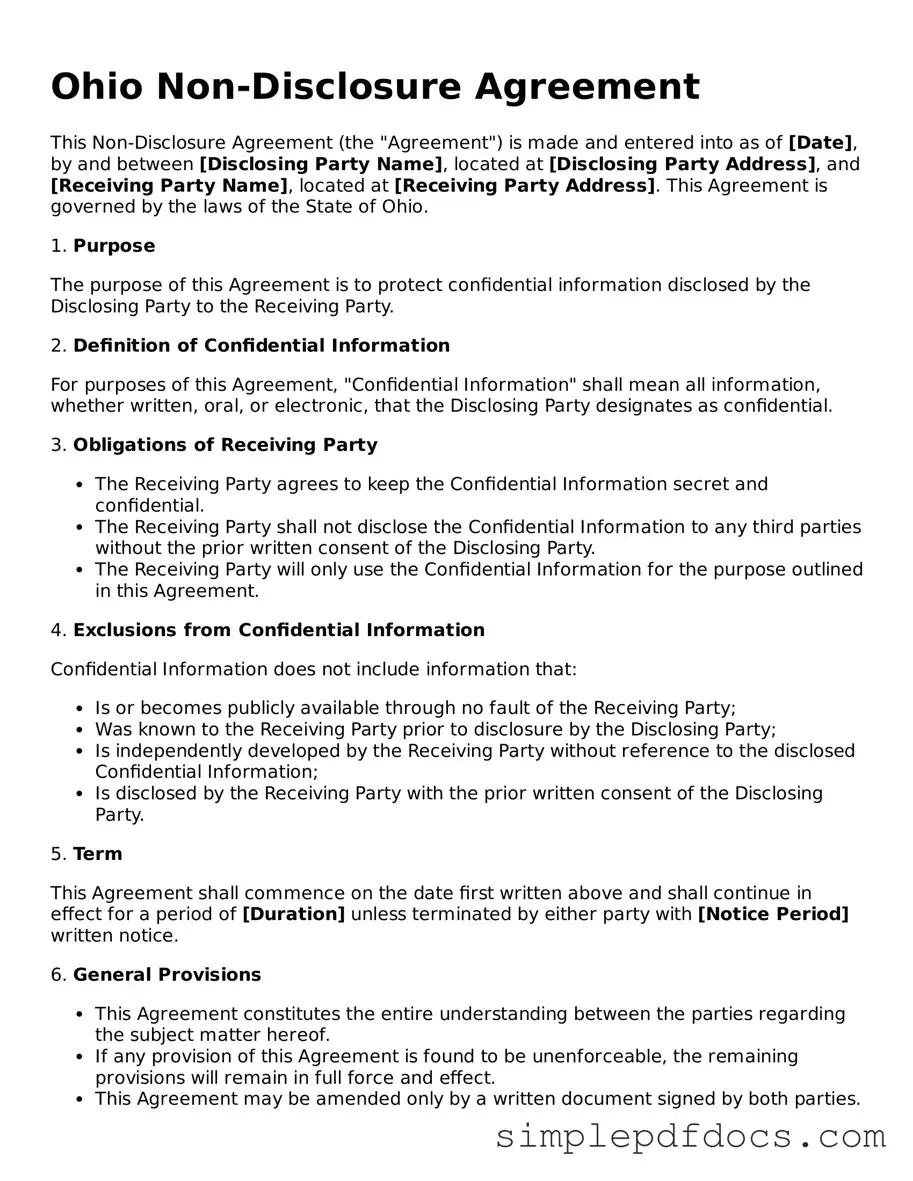In the realm of business and personal relationships, confidentiality often plays a crucial role in fostering trust and protecting sensitive information. The Ohio Non-disclosure Agreement (NDA) form serves as a vital tool for individuals and organizations seeking to safeguard proprietary data from unauthorized disclosure. This legally binding contract outlines the obligations of the parties involved, specifying what information is deemed confidential and the circumstances under which it can be shared. The form typically includes key elements such as the definition of confidential information, the duration of confidentiality obligations, and the consequences of breach. Additionally, it may address the governing law and dispute resolution mechanisms, ensuring clarity and fairness in the event of disagreements. By establishing clear parameters for confidentiality, the Ohio NDA not only protects intellectual property but also fosters a culture of trust and cooperation among collaborators, whether they are business partners, employees, or independent contractors.
